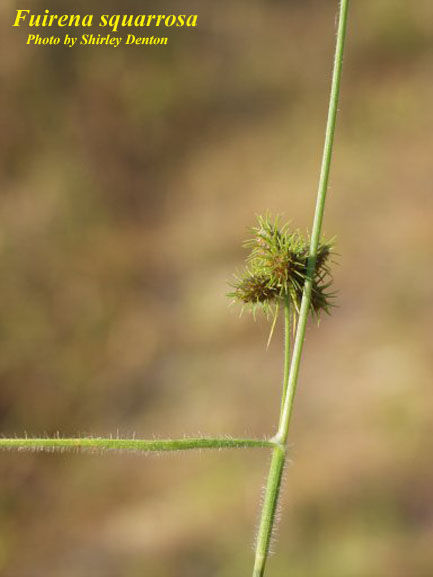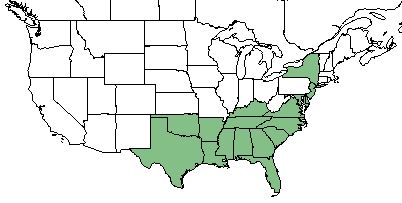Difference between revisions of "Fuirena squarrosa"
(→Ecology) |
|||
| Line 37: | Line 37: | ||
<!--===Seed dispersal===--> | <!--===Seed dispersal===--> | ||
<!--===Seed bank and germination===--> | <!--===Seed bank and germination===--> | ||
| − | + | ||
| + | ===Fire ecology=== <!--Fire tolerance, fire dependence, adaptive fire responses--> | ||
| + | Sphagnous bogs and other similar communities are fire dependent due to their high acidity, which makes ''F. squarrosa'' dependent on fire frequency <ref name= "Campbell"> Campbell, C. S. (1983). "Systematics of the Andropogon virginicus complex (Gramineae)." Journal of the Arnold Arboretum 64(2): 171-254. </ref>. | ||
<!--===Pollination===--> | <!--===Pollination===--> | ||
<!--===Use by animals===--> <!--Herbivory, granivory, insect hosting, etc.--> | <!--===Use by animals===--> <!--Herbivory, granivory, insect hosting, etc.--> | ||
Revision as of 15:02, 22 May 2018
| Fuirena squarrosa | |
|---|---|

| |
| Photo by the Atlas of Florida Plants Database | |
| Scientific classification | |
| Kingdom: | Plantae |
| Division: | Magnoliophyta - Flowering plants |
| Class: | Liliopsida - Moncots |
| Order: | Poales |
| Family: | Cyperaceae |
| Genus: | Fuirena |
| Species: | F. squarrosa |
| Binomial name | |
| Fuirena squarrosa Michx. | |

| |
| Natural range of Fuirena squarrosa from USDA NRCS Plants Database. | |
Contents
Taxonomic Notes
Synonyms: Fuirena hispida Elliott
Varieties: none
Description
F. squarrosa is a native perennial graminoid that is a member of the Cyperaceae family [1].
Distribution
The species can be found in the Southeast United States, ranging from Texas to Virginia, as well as in the Northeast in Maryland, New Jersey, and New York [1].
Ecology
Habitat
F. squarrosa can be found in mesic communities, including sphagnous bogs [2].
Associated species - Eleocharis tuberculosa, Gentiana saponaria, Bartonia paniculata, Platanthera cristata, Pyrus arbutifolia, and Viburnum nudum [2].
Fire ecology
Sphagnous bogs and other similar communities are fire dependent due to their high acidity, which makes F. squarrosa dependent on fire frequency [3].
Conservation and Management
Cultivation and restoration
Photo Gallery
References and notes
- ↑ 1.0 1.1 USDA Plants Database URL: https://plants.usda.gov/core/profile?symbol=FUSQ
- ↑ 2.0 2.1 Bridges, E. L. and S. L. Orzell (1989). "Syngonanthus flavidulus (Eriocaulaceae) new to Mississippi." SIDA, Contributions to Botany 13(4): 512-515.
- ↑ Campbell, C. S. (1983). "Systematics of the Andropogon virginicus complex (Gramineae)." Journal of the Arnold Arboretum 64(2): 171-254.